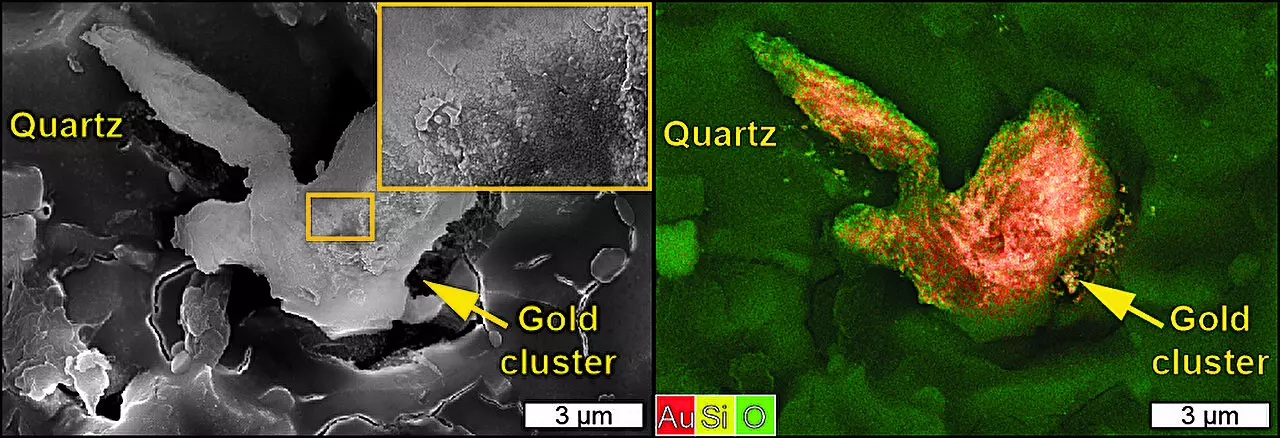Gold has captivated human imagination for centuries, symbolizing wealth and beauty. From ancient civilizations to modern economies, gold has served not only as a medium of exchange but also as a prized possession. Yet, the process through which gold nuggets form in the Earth has remained somewhat enigmatic, particularly when it comes to understanding larger nuggets found within quartz veins. Recent research from Monash University has challenged the traditional views of gold nugget formation, suggesting an electrifying mechanism at play that could transform our understanding of this geological phenomenon.
Historically, the prevailing theory posited that gold precipitates out of hot, water-saturated fluids that traverse the Earth’s crust. As these fluids cool or chemically alter, the gold becomes trapped in quartz veins. Although this hypothesis has been the standard explanation among geologists, it fails to convincingly account for the unexpected sizes of some gold nuggets, especially since the concentration of gold in such fluids tends to be extremely low. The age-old mystery surrounding the formation of gold nuggets warranted a fresh perspective, prompting a re-evaluation of the very processes that could lead to such rich deposits.
A groundbreaking concept from the research conducted by Dr. Chris Voisey and his team revolves around piezoelectricity—a property inherent to quartz that generates electric charge under mechanical stress. This principle is not unfamiliar in everyday technology, as it plays a crucial role in devices like quartz watches and ignition lighters. Could the intense stress from seismic activities—earthquakes—trigger similar processes deep beneath the Earth’s surface? The implications are tantalizing and are worth exploring in depth.
To validate their hypothesis, the researchers designed an experiment that mimicked the geological conditions quartz might undergo during seismic events. They submerged quartz crystals in a gold-infused fluid and employed a motor to simulate the vibrations characteristic of earthquakes. The experiment aimed to trigger the piezoelectric effect within the quartz and observe any resulting deposition of gold particles. The insights gleaned from this investigation promised to redefine our understanding of gold nugget formation, by suggesting that even minute physical stressors in quartz could yield significant mineralogical results.
The results of the experiment revealed a remarkable phenomenon; not only did the quartz crystals deposit gold onto their surfaces, but they were also able to generate nanoparticles of gold. According to Professor Andy Tomkins, a co-author of the study, the stressed quartz exhibited a surprising propensity to deposit gold on existing gold grains rather than forming new ones. This insight introduced a novel dimension to gold nugget formation—where small deposits accumulate on pre-existing gold, essentially creating a ‘plating’ effect.
Dr. Voisey articulated a profound conclusion: as quartz continually undergoes seismic stresses, it effectively behaves like a natural battery. The interactions of piezoelectric charges and the conductive properties of gold lead to the reduction of dissolved gold from the surrounding fluid, facilitating a continual deposition process. Over time, this gradual accumulation can result in the impressive nuggets that have long captured the interest of geologists and treasure seekers alike.
This research introduces a pivotal shift in the understanding of how large gold nuggets form within quartz veins. By connecting the physical stresses resulting from earthquakes to gold’s accumulation through piezoelectric effects, a consistent and logical mechanism emerges. The findings illuminate the intricate relationships between geological processes—offering not just an explanation for the enigma of gold nuggets, but a deeper appreciation for the dynamic nature of Earth’s crust. This innovative research opens up new avenues for future investigation into mineral formation and sets the stage for perhaps even more thrilling discoveries in the realm of geology.

